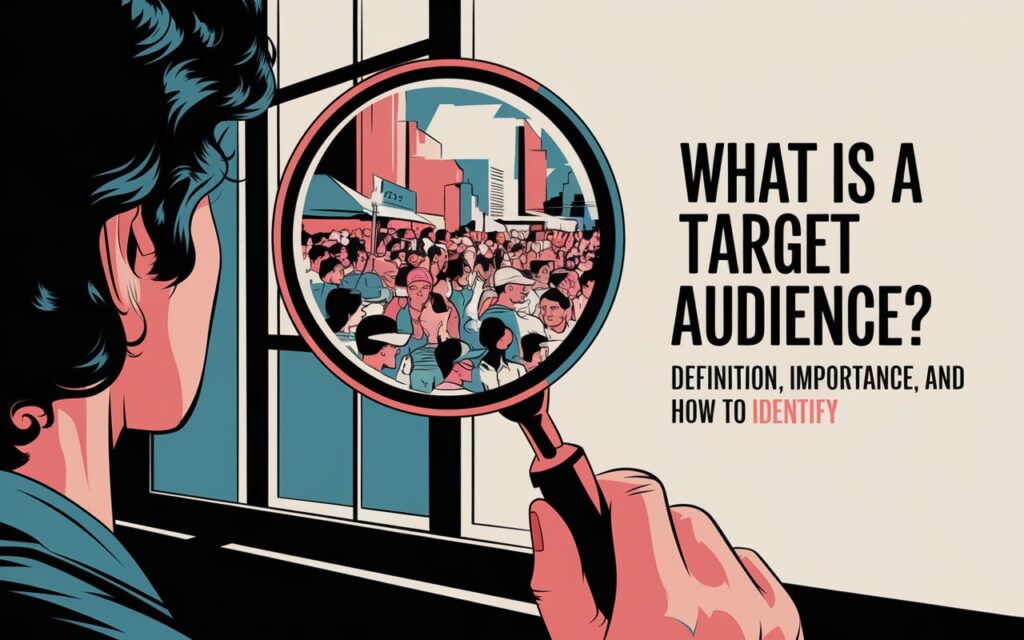In today’s crowded marketplace, simply having a great product or service isn’t enough. To truly stand out, resonate with your target audience, and foster long-term customer loyalty, you need a strong brand identity. Your brand identity is more than just a logo; it’s the entire personality, voice, and visual representation of your business – how it looks, feels, and speaks to the world. Building a powerful brand identity from scratch is a foundational step for any new venture, and this comprehensive guide will walk you through the essential steps.

KEY TAKEAWAYS
- A strong brand identity is the unique personality of your business, encompassing its visual elements, voice, values, and the overall experience it provides.
- Defining your brand’s core values and mission is the crucial first step in building a resonant identity.
- Understanding your target audience is essential for creating a brand identity that speaks directly to their needs and preferences.
- Visual elements like your logo, color palette, typography, and imagery play a critical role in creating a memorable and consistent brand appearance.
- Your brand voice and tone should be consistent across all communications, reflecting your brand’s personality and values.
- Consistency across all touchpoints is paramount to building a recognizable and trustworthy brand identity.
What is Brand Identity? Beyond the Logo
Before diving into the “how-to,” it’s crucial to understand what brand identity truly entails. It’s the collection of all elements that a company creates to portray the right image to its consumer. This includes:
- Visual Identity: Logo, color palette, typography (fonts), imagery (photography, illustrations), brand guidelines.
- Verbal Identity: Brand name, tagline, voice (the personality expressed in your communication), tone (the specific way you communicate in different contexts), key messaging.
- Brand Experience: The overall feeling and perception customers have when interacting with your brand at any touchpoint – from your website to customer service.
- Brand Values & Mission: The core beliefs that guide your business and the fundamental purpose of your existence.
A strong brand identity is cohesive, consistent, and authentically reflects who you are and what you stand for. It’s what makes your business recognizable and helps customers connect with you on an emotional level.
Step 1: Define Your Brand’s Core
The foundation of a strong brand identity lies in understanding your brand’s essence. This involves introspection and clearly defining:
- Your Brand’s Mission: Why does your business exist? What problem are you solving? What impact do you want to make?
- Your Brand’s Vision: What is your long-term aspiration for your business? What do you hope to achieve in the future?
- Your Brand’s Values: What are the core beliefs and principles that guide your business decisions and actions? What do you stand for?
- Your Brand’s Personality: If your brand were a person, what would its characteristics be? (e.g., innovative, friendly, sophisticated, trustworthy, bold).
Answering these fundamental questions will provide the compass for all your branding decisions.
Step 2: Understand Your Target Audience (Especially in India)
As highlighted in the previous article on the marketing funnel, knowing your target audience is paramount. For businesses operating in India, this requires considering the diverse cultural landscape, linguistic preferences, economic segments, and regional nuances. Ask yourself:
- Who are your ideal customers in India? What are their demographics, psychographics, needs, and pain points?
- What are their online and offline behaviors in the Indian context? Which social media platforms do they use? What kind of content resonates with them?
- What are their cultural values and sensitivities? How can your brand communicate respectfully and effectively within the Indian context?
- What are their purchasing habits and preferences in India?
Understanding your Indian audience deeply will enable you to tailor your brand identity to resonate authentically with them.
Step 3: Research Your Competition (In the Indian Market)
Analyze your competitors, especially those successful in the Indian market. Identify:
- Their brand identities: What do their logos, colors, and messaging convey?
- Their strengths and weaknesses: What are they doing well, and where are they falling short?
- Their target audience: Are they targeting the same segment as you?
- Their positioning: How are they differentiating themselves in the market?
This research isn’t about copying your competitors but rather about identifying opportunities to differentiate your brand and carve out your unique space in the Indian marketplace.
Step 4: Craft Your Visual Identity
Your visual identity is what people will immediately recognize and remember. Key elements include:
- Logo: A memorable and distinctive visual symbol that represents your brand. It should be versatile and work across different platforms. Consider working with a professional designer who understands design principles and your brand essence.
- Color Palette: Choose a primary and secondary color palette that reflects your brand’s personality and appeals to your target audience. In India, colors often carry cultural significance, so research their connotations.
- Typography: Select a few fonts (for headings, body text, etc.) that are legible and reflect your brand’s style. Ensure they support the necessary Indian language scripts if your target audience requires it.
- Imagery: Determine the style of photography, illustrations, or icons that will represent your brand. Will it be modern and minimalist, warm and inviting, or bold and dynamic? Consider using imagery that resonates with Indian culture and settings where appropriate.
- Brand Guidelines: Document all these visual elements in a brand guideline. This ensures consistency across all your marketing materials and helps anyone working with your brand maintain its visual integrity.
Step 5: Define Your Brand Voice and Tone
Your brand voice is the personality you express in your communication, while your tone is the specific way you communicate in different situations. Consider:
- Your Brand’s Personality: Refer back to the characteristics you defined in Step 1.
- Your Target Audience: How do they communicate? What kind of language resonates with them?
- Your Messaging Pillars: What are the key messages you want to consistently convey?
Your brand voice should be consistent across all your content, from website copy and social media posts to customer service interactions. Your tone might adapt depending on the context (e.g., more formal in legal documents, more casual on social media). Ensure your voice is culturally relevant and respectful in the Indian context.
Step 6: Develop Your Key Messaging
Your key messages are the core ideas you want to communicate about your brand. These should be concise, compelling, and consistent across all your marketing efforts. They should clearly articulate your value proposition and what makes you unique.
Step 7: Integrate and Maintain Consistency Across All Touchpoints
Consistency is the cornerstone of a strong brand identity. Ensure that your visual and verbal identity is consistently applied across:
- Your website and online presence
- Your social media profiles and content
- Your marketing materials (brochures, business cards, presentations)
- Your packaging
- Your customer service interactions
- Your physical storefront (if applicable)
Every interaction a customer has with your brand should reinforce your identity and create a cohesive and memorable experience.
Step 8: Gather Feedback and Iterate
Building a strong brand identity is an ongoing process. As your business evolves and you learn more about your audience, be open to gathering feedback and making adjustments to your identity. Monitor how your brand is being perceived and be willing to refine your visual and verbal elements as needed, while staying true to your core values.
Conclusion: Building a Resonant Brand in India and Beyond
Building a strong brand identity from scratch is a significant investment of time and effort, but it’s essential for long-term success, especially in a diverse and competitive market like India. By thoughtfully defining your brand’s core, understanding your audience, crafting a compelling visual and verbal identity, and maintaining consistency across all touchpoints, you can create a brand that resonates with your target customers, builds trust, and stands out from the crowd. Remember that your brand identity is the foundation upon which you will build relationships, attract loyal customers, and ultimately achieve your business goals.





